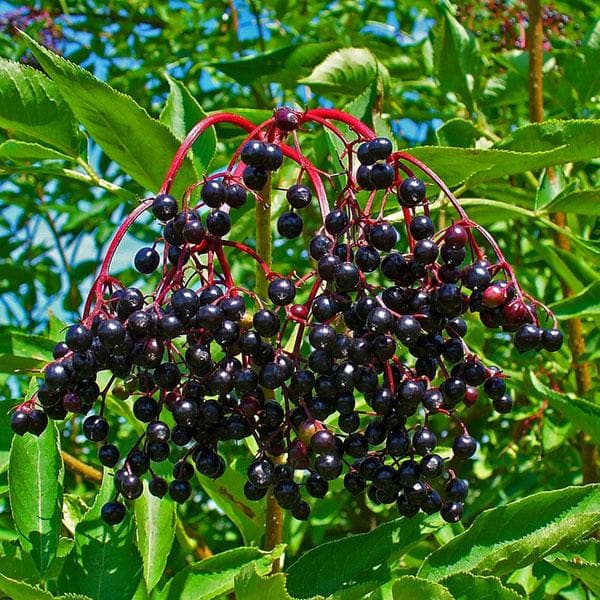
Sambucus Nigra, Elderberry, Black Elder - Plant
(MRP Inclusive of all taxes)
- Shipping ₹79 for entire order
- Dispatch in 7 days
- Country of origin: India

(MRP Inclusive of all taxes)
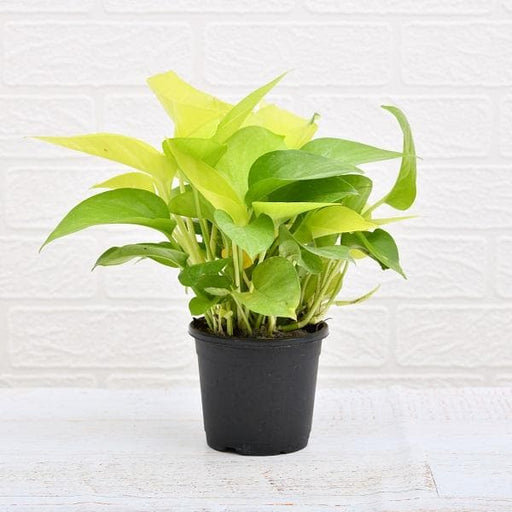 Save 29%
Save 29%
Air Purifier Money Plant with Pot The Air Purifier Money Plant, also known as Pothos or Epipremnum aureum, is a stunning indoor plant that...
View full details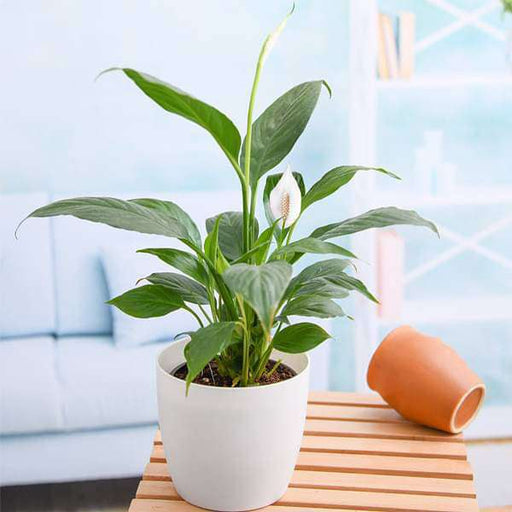
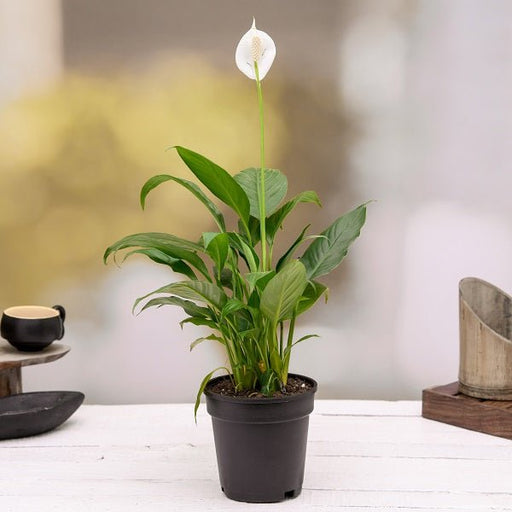 Save up to 15%
Save up to 15%
Peace Lily, Spathiphyllum - Plant The Peace Lily, scientifically known as Spathiphyllum, is a stunning houseplant celebrated for its elegant white...
View full details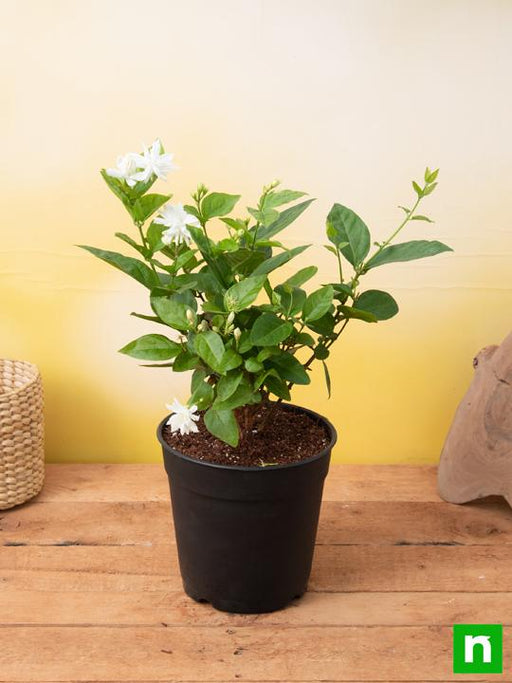
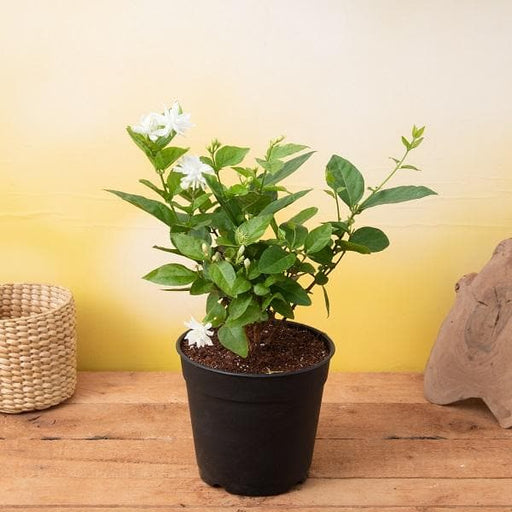 Save 25%
Save 25%
Jasminum sambac, Mogra, Arabian Jasmine - Plant Jasminum sambac, commonly known as Mogra or Arabian Jasmine, is a fragrant flowering plant...
View full details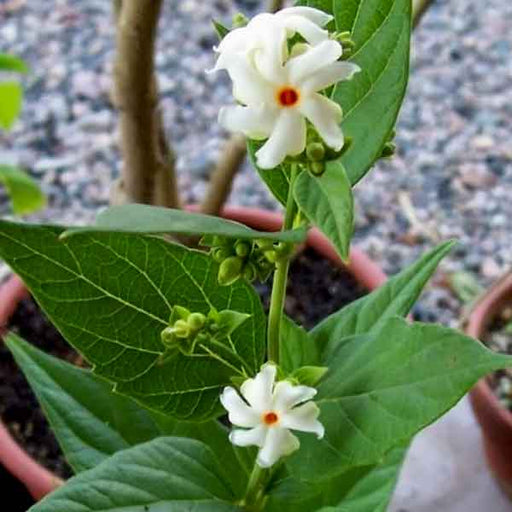
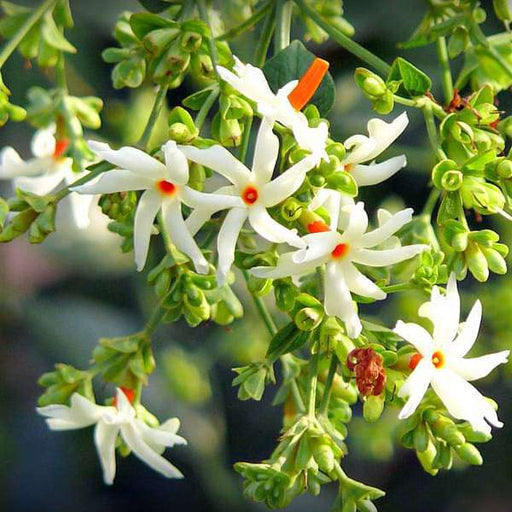 Save 18%
Save 18%
Combo Constituents Includes the Parijat Tree (Night-Flowering Jasmine), a culturally significant plant with fragrant flowers. Description The Pari...
View full details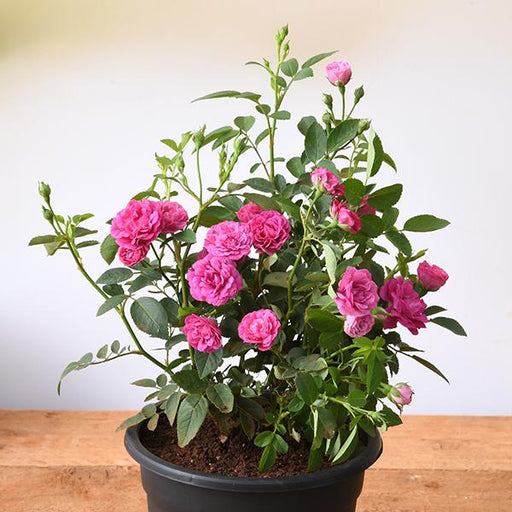
 Save 25%
Save 25%
Miniature Rose, Button Rose (Any Color) - Plant The Miniature Rose, also known as the Button Rose, is a charming and compact flowering plant that ...
View full details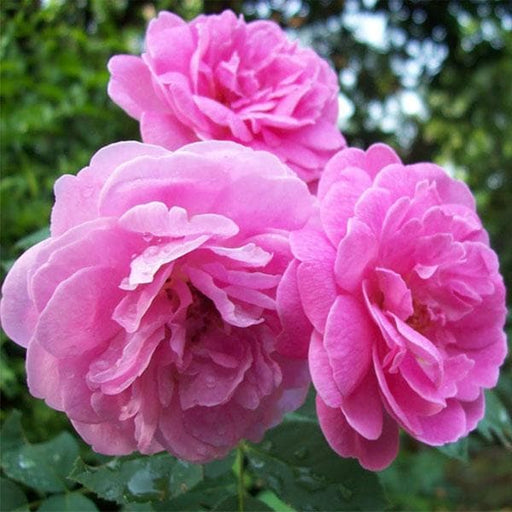 Save 25%
Save 25%
Damascus Rose, Scented Rose (Any Color) - Plant The Damascus Rose, also known as Rosa damascena, is a timeless symbol of beauty and romanc...
View full details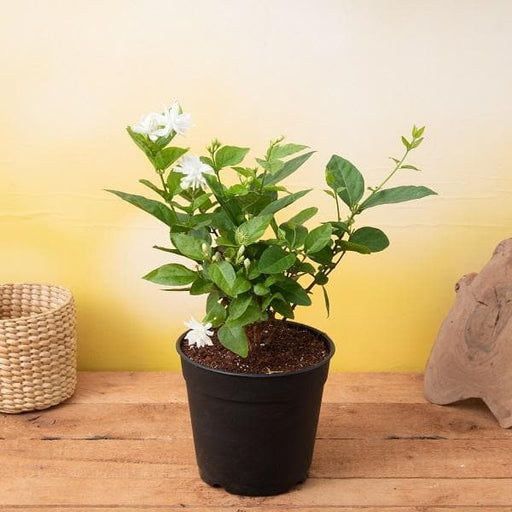
 Save 17%
Save 17%
Beautiful Fragrant Mogra, Arabian Jasmine Plant with Pot The Beautiful Fragrant Mogra, also known as Arabian Jasmine (Jasminum sambac), is...
View full details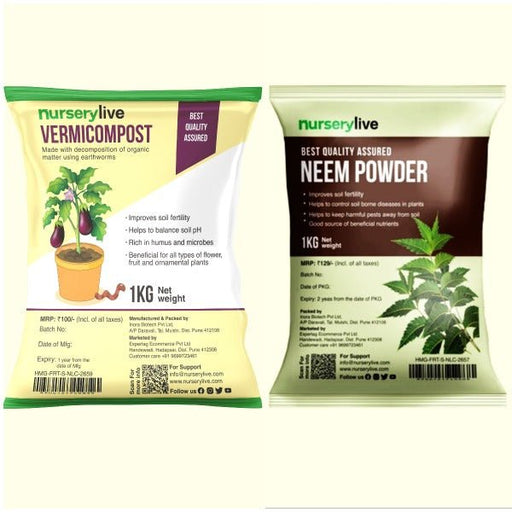 Save 15%
Save 15%
Pack of Vermicompost and Neem Cake for House Plants Transform your indoor garden with our premium Pack of Vermicompost and Neem Cake, spec...
View full details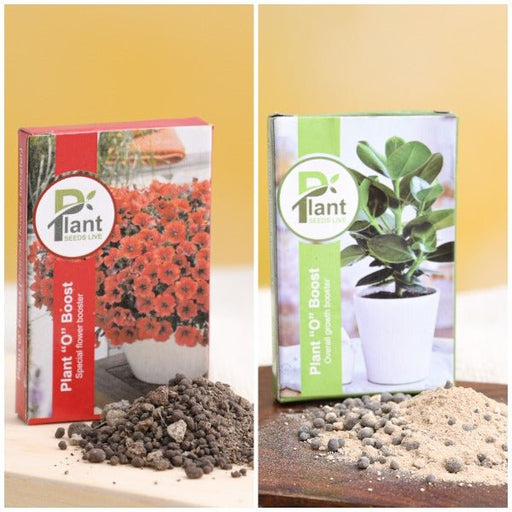
Pack of Plant Growth and Flower Boosters Unlock the full potential of your garden with our Pack of Plant Growth and Flower Boosters! This ...
View full details Save 38%
Save 38%
Combo of Jeevamrut and Neem Raksha for Easy Growth and Protection of Houseplants Transform your indoor garden with our exclusive combo of ...
View full details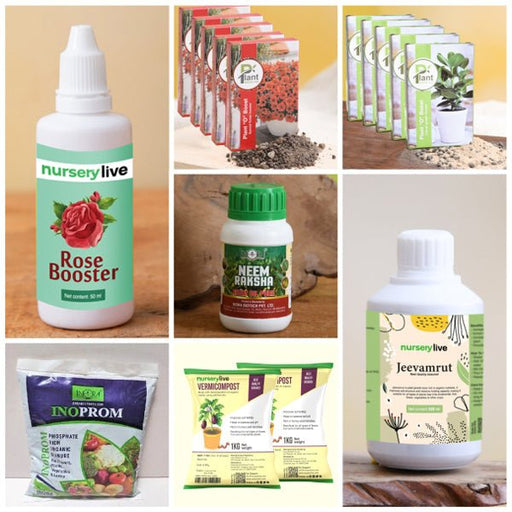 Save 22%
Save 22%
Plant Nutrients Kit (Pack of 16) for a Healthy Garden Transform your garden into a lush paradise with our Plant Nutrients Kit, featuring 1...
View full details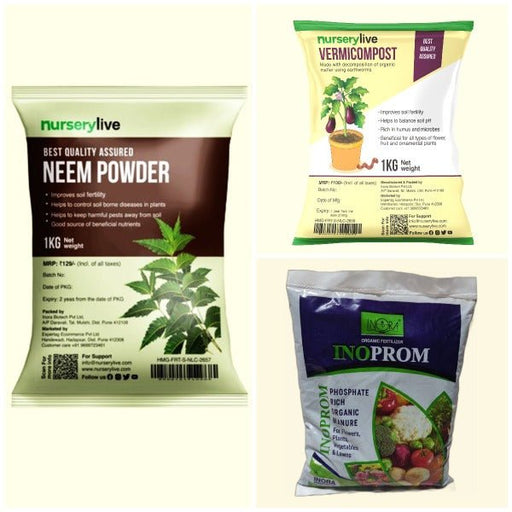 Save 16%
Save 16%
Combo of Top Plant Fertilizers Elevate your gardening game with our exclusive Combo of Top Plant Fertilizers, featuring two bags of premiu...
View full details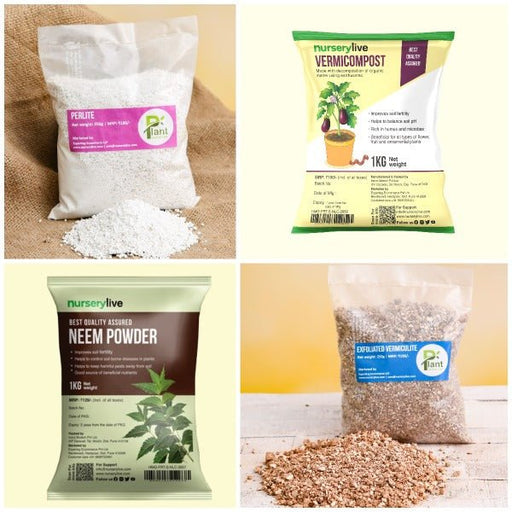 Save 24%
Save 24%
Pack of 4 Additives to Make Soil Healthy and Nutrient Rich Transform your garden into a thriving ecosystem with our Pack of 4 Additives de...
View full details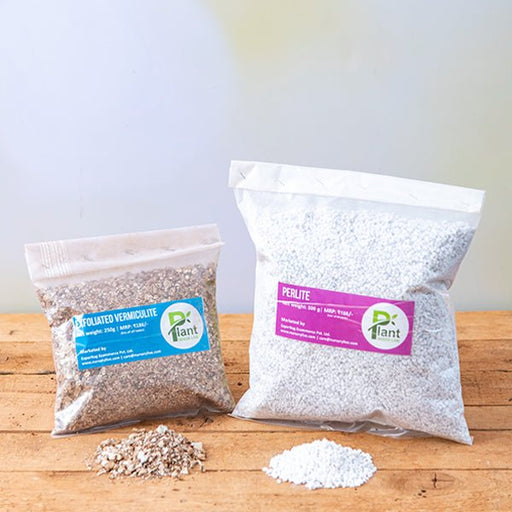 Save 30%
Save 30%
Transform your gardening experience with our premium Combo of Perlite and Vermiculite. This unique blend is designed to enhance soil aeration and ...
View full details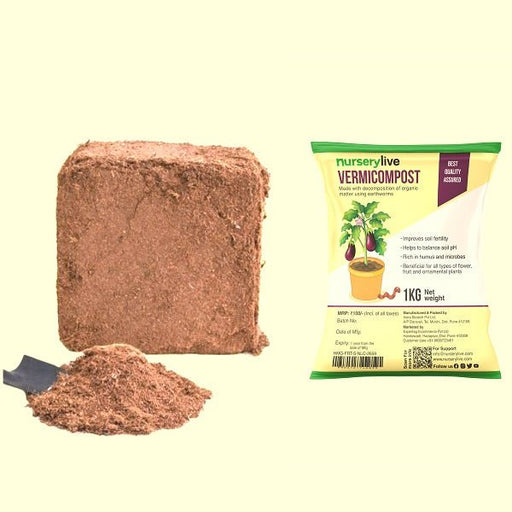 Save 27%
Save 27%
Combo of 2 Vermicompost and Cocopeat - Enrich Your Soil Naturally! Transform your garden into a thriving ecosystem with our Combo of 2 Ver...
View full details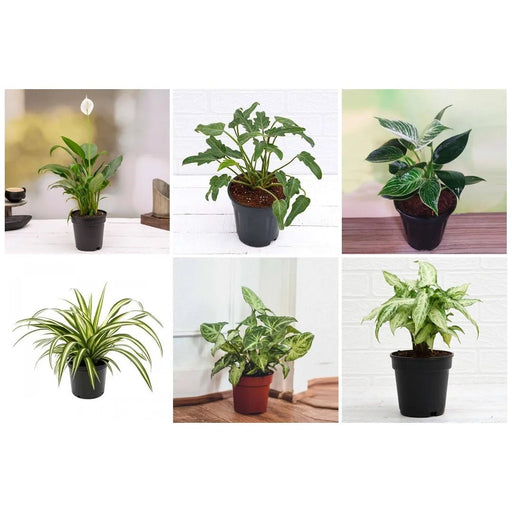
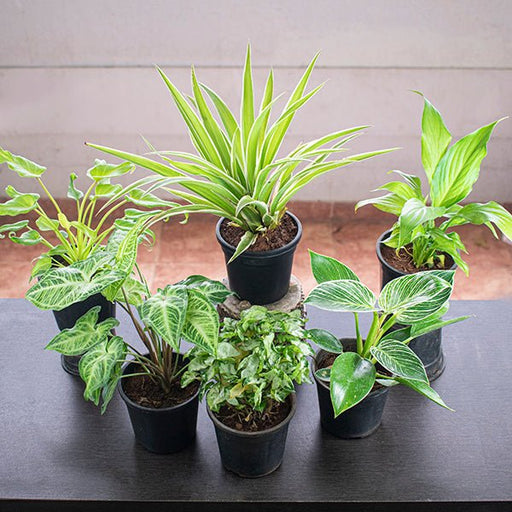 Save 35%
Save 35%
Best 6 Plants for Perfect Indoor Garden Transform your living space into a lush oasis with our curated collection of the Best 6 Plants for a...
View full details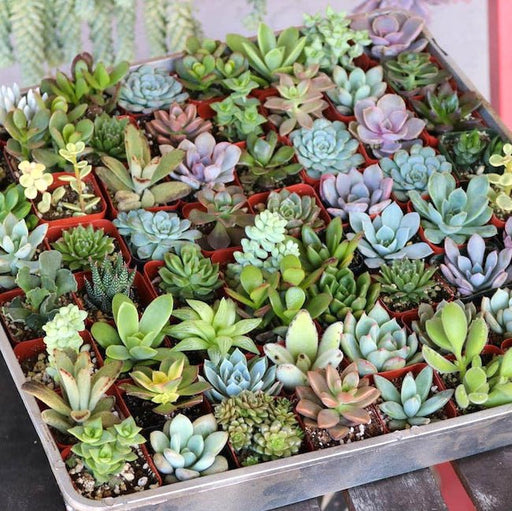
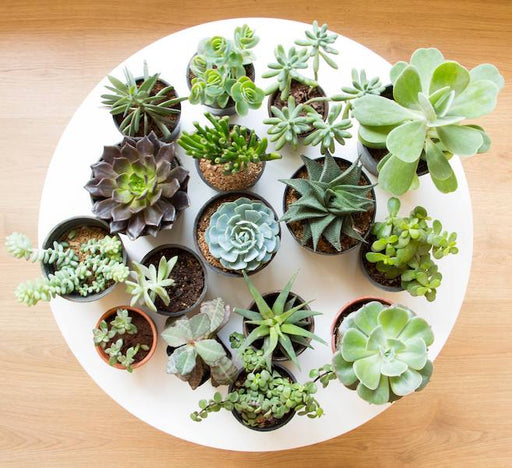 Save up to 50%
Save up to 50%
Mini Succulent Garden Pack Transform your space with our Mini Succulent Garden Pack, featuring a delightful collection of 4 any variety beautiful s...
View full details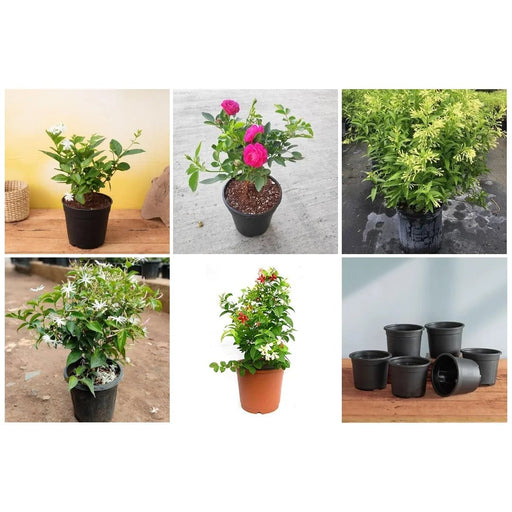
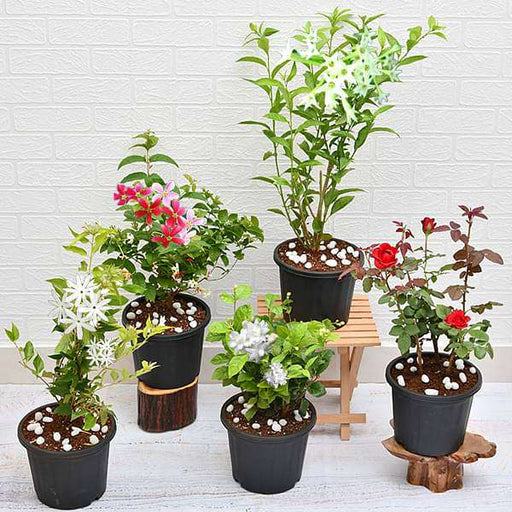 Save 30%
Save 30%
5 Best Fragrant Plants Transform your garden or indoor space into a fragrant paradise with our curated selection of the 5 Best Fragrant Plants. Th...
View full details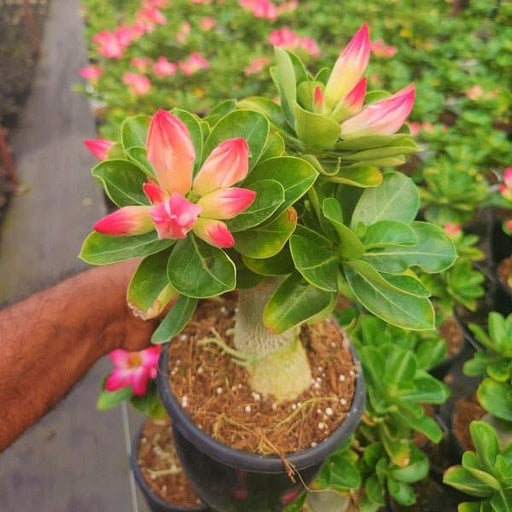
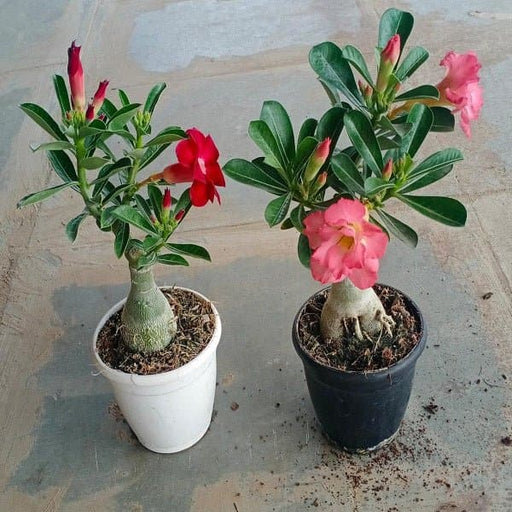 Save 24%
Save 24%
Set of 2 Bonsai Looking Grafted Adeniums Transform your indoor or outdoor space with our exquisite Set of 2 Bonsai Looking Grafted Adenium...
View full details Save 45%
Save 45%
Top 4 Die Hard Succulents Pack Transform your indoor or outdoor space with our Top 4 Die Hard Succulents Pack, featuring a curated selecti...
View full details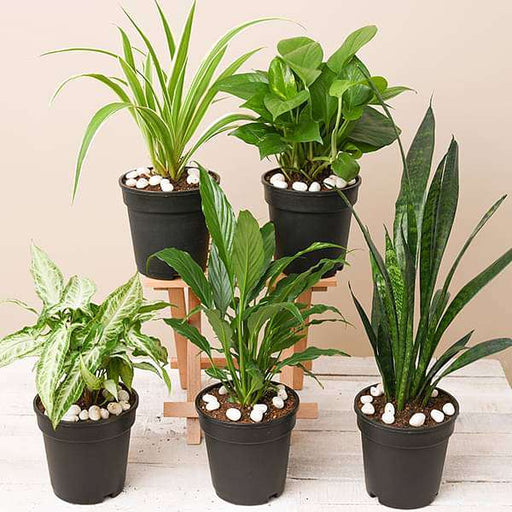
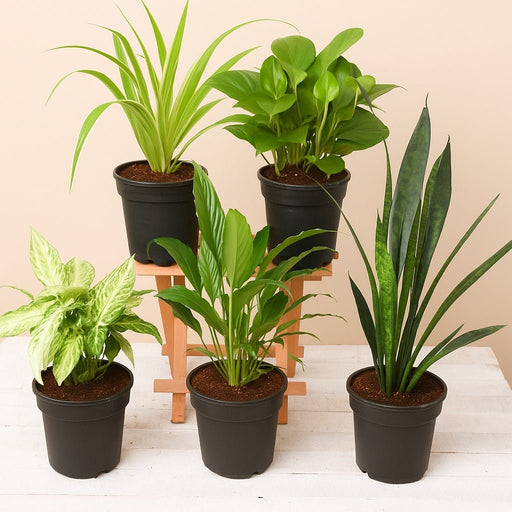 Save 30%
Save 30%
5 Best Indoor Plants Pack Transform your living space into a lush oasis with our '5 Best Indoor Plants Pack.' This carefully curated collection fe...
View full details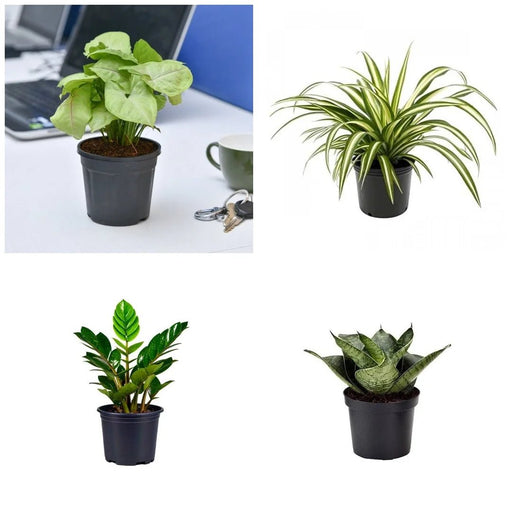
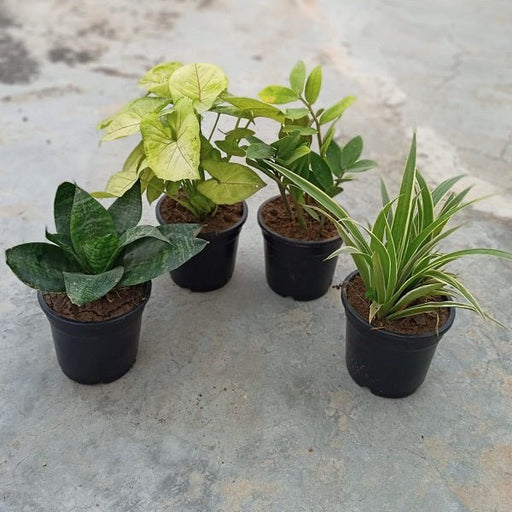 Save 25%
Save 25%
Set of 4 Evergreen Air Purifier Plant Pack Transform your indoor space into a lush, green oasis with our Set of 4 Evergreen Air Purifier Pla...
View full details| SrNo | Item Name |
|---|---|
| 1 | Sambucus Nigra, Elderberry, Black Elder - Plant |
The Sambucus Nigra, commonly known as Elderberry or Black Elder, is a deciduous shrub renowned for its striking clusters of white flowers and dark purple berries. This versatile plant thrives in various environments, making it a favorite among gardeners and herbalists alike. Historically, elderberries have been used for centuries in traditional medicine, celebrated for their immune-boosting properties and rich antioxidant content.
What makes the Elderberry plant special is its dual purpose: not only does it enhance garden aesthetics with its beautiful blooms, but it also provides a bounty of nutritious berries that can be transformed into syrups, jams, and wines. The plant is also a vital food source for birds and beneficial insects, promoting biodiversity in your garden.
One of the standout features of the Sambucus Nigra is its adaptability. It can flourish in a variety of soil types and conditions, making it an excellent choice for both novice and experienced gardeners. Additionally, its berries are packed with vitamins A, C, and antioxidants, making them a powerhouse for health enthusiasts.
The Sambucus Nigra plays a crucial role in supporting local ecosystems. Its flowers provide nectar for bees and butterflies, while the berries serve as a food source for various bird species. By planting elderberries, you contribute to the health of your local environment and promote biodiversity.
If you think elderberries are just for grandma's cough syrup, think again! Sambucus Nigra is a powerhouse of antioxidants, vitamins, and minerals that can boost your immune system faster than you can say "superfood." Packed with flavonoids, this berry is like nature's little bodyguard, ready to fend off those pesky colds and flu. Plus, it’s known to support heart health and reduce inflammation. So, whether you’re sipping elderberry syrup or munching on the berries, you’re doing your body a solid. Who knew being healthy could taste so good?
Ready to channel your inner kitchen wizard? Making elderberry syrup is easier than pie—well, easier than a pie that requires baking! Just simmer dried elderberries with water, add a splash of honey, and voilà! You’ve got a delicious elixir that not only tastes divine but also packs a health punch. This syrup is perfect for drizzling on pancakes or taking a spoonful when you feel a sniffle coming on. It’s like a warm hug for your immune system, and who doesn’t want that?
If you think caring for a Black Elder tree is a walk in the park, think again! These beauties thrive in well-drained soil and love a good sunbath. They’re not picky, but they do appreciate a little TLC—like regular watering and occasional pruning. And let’s not forget about their penchant for attracting pollinators. So, if you want to be the neighborhood’s butterfly whisperer, plant a Black Elder tree and watch the magic unfold. Just remember, with great power (and beauty) comes great responsibility!
Who said elderberries are just for health? Let’s talk about the sophisticated side of Sambucus Nigra—elderberry wine! This delightful concoction is like a fine wine that’s been to a health retreat. With its rich, fruity flavor and deep color, elderberry wine is perfect for toasting to good health or simply enjoying on a cozy evening. Plus, it’s a conversation starter at parties. “Oh, this? Just my homemade elderberry wine. No big deal.” Cheers to that!
If you haven’t tried elderberry jam, you’re missing out on a spread that’s as delightful as a sunny morning! This sweet and tangy concoction is perfect for slathering on toast or dolloping on yogurt. Made from the magical Sambucus Nigra, elderberry jam is not just a treat for your taste buds; it’s also a way to sneak in some antioxidants. So, next time you’re at the breakfast table, elevate your toast game with a generous scoop of this berry goodness. Your taste buds will thank you!
Let’s get serious for a moment—Sambucus Nigra extract is like the concentrated essence of health in a bottle. This potent extract is often used in supplements and remedies, making it a go-to for those looking to boost their wellness routine. It’s like having a tiny health guru in your cabinet, ready to help you fend off colds and support your immune system. Just a few drops can make a world of difference. Who knew a little bottle could hold so much power?
If you’re looking for a fun way to get your daily dose of elderberry, look no further than elderberry gummies! These chewy delights are like candy for your health—who wouldn’t want to munch on something that tastes good and does good? Packed with the benefits of Sambucus Nigra, these gummies are perfect for both kids and adults. They make taking your vitamins feel like a treat rather than a chore. So, pop a gummy and feel like a health champion!
Move over, lemonade! Elderflower cordial is here to steal the spotlight. This refreshing drink, made from the delicate flowers of the Sambucus Nigra, is like summer in a glass. With its floral notes and sweet taste, it’s perfect for sipping on a hot day or mixing into cocktails. Plus, it’s a great way to impress your friends at gatherings. “Oh, this? Just my homemade elderflower cordial. No big deal.” You’ll be the toast of the town!
If you’re a tea lover, you’ll want to add Sambucus Nigra tea to your collection. This herbal infusion is not only soothing but also packed with health benefits. Imagine curling up with a warm cup of elderberry tea, knowing you’re sipping on something that can help boost your immune system. It’s like a cozy blanket for your insides! Plus, it’s caffeine-free, so you can enjoy it any time of day without the jitters. Sip, relax, and let the elderberry magic work its wonders.
Who says healthy can’t be delicious? An elderberry smoothie is the perfect way to kickstart your day or refuel after a workout. Blend up some frozen elderberries, yogurt, and a banana, and you’ve got yourself a creamy, dreamy drink that’s as nutritious as it is tasty. It’s like a party in your blender, and everyone’s invited! Plus, you’ll be getting all the benefits of Sambucus Nigra while enjoying a refreshing treat. Talk about a win-win!
Let’s not forget about the beauty benefits of Sambucus Nigra! This magical plant isn’t just for your insides; it can work wonders for your skin too. With its anti-inflammatory and antioxidant properties, elderberry extracts are often found in skincare products. They help soothe irritation and promote a healthy glow. So, if you want to channel your inner beauty guru, look for products featuring elderberry. Your skin will thank you, and you’ll be radiating confidence like never before!
Sambucus Nigra, or Elderberry, is a fabulous shrub that produces dark purple berries. These little gems are not just pretty; they’re packed with antioxidants and have been used for centuries in folk medicine. Think of it as nature’s candy with a health twist—delicious and good for you!
Growing Sambucus Nigra is easier than convincing your cat to ignore that laser pointer. Plant it in well-drained soil with plenty of sunlight, and watch it thrive. Just remember, it loves moisture, so don’t let it dry out like your last plant that you forgot to water!
Elderberry is like the superhero of the berry world! Packed with vitamins A, B, and C, it’s known for boosting the immune system and fighting off colds. Plus, it’s a natural remedy for flu symptoms. Who needs a cape when you have Elderberry
Hold your horses! Raw Elderberries are like that friend who’s fun but a little risky. They contain cyanogenic glycosides, which can be toxic. Cooking them transforms these berries into a delicious syrup or jam, making them safe and scrumptious. Always cook before you munch!
Making Elderberry syrup is as easy as pie—if pie were a liquid! Simmer cooked berries with water, strain, and add honey for sweetness. Voila! You’ve got a syrup that’s perfect for pancakes or a soothing remedy. Just don’t forget to share… or not!
Timing is everything, especially with Elderberries! Harvest them in late summer to early fall when they’re plump and dark. If you wait too long, the birds might beat you to it. So, channel your inner berry ninja and get those fruits before they fly away!
While Elderberry is mostly a rockstar, it can cause stomach upset if consumed in large amounts. Always start small, especially if you’re new to the berry scene. And remember, moderation is key—no one wants a berry hangover!
Absolutely! Elderberry is not just a tasty treat; it’s also a skincare superstar. Packed with antioxidants, it can help fight free radicals and promote healthy skin. Just whip up a DIY face mask, and you’ll be glowing like you just walked off a magazine cover!
Sambucus Nigra is like that friend who’s not easily impressed—deer tend to avoid it! While no plant is entirely deer-proof, its strong scent and taste usually keep these critters at bay. So, plant away without worrying about your leafy friends becoming a salad!
Propagating Elderberry is as easy as pie—again, if pie were a plant! You can take cuttings in spring or fall and place them in water or soil. With a little patience and care, you’ll have new Elderberry plants sprouting up like magic!
Elderberry is generally pest-resistant, but watch out for aphids and spider mites. They can be as annoying as a pop quiz on a Monday morning. Keep an eye on your plants, and if you spot any intruders, a gentle spray of water or insecticidal soap should do the trick!